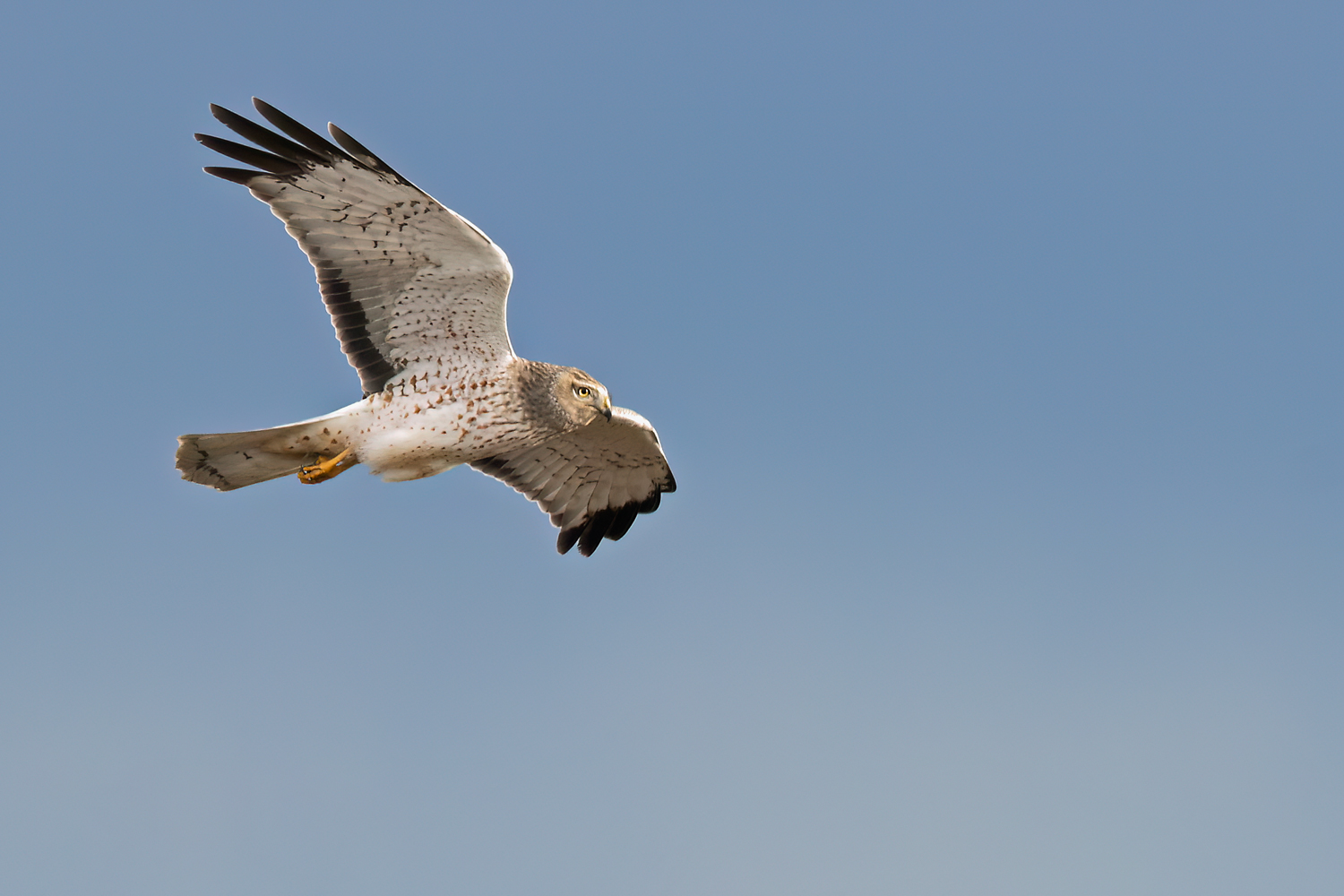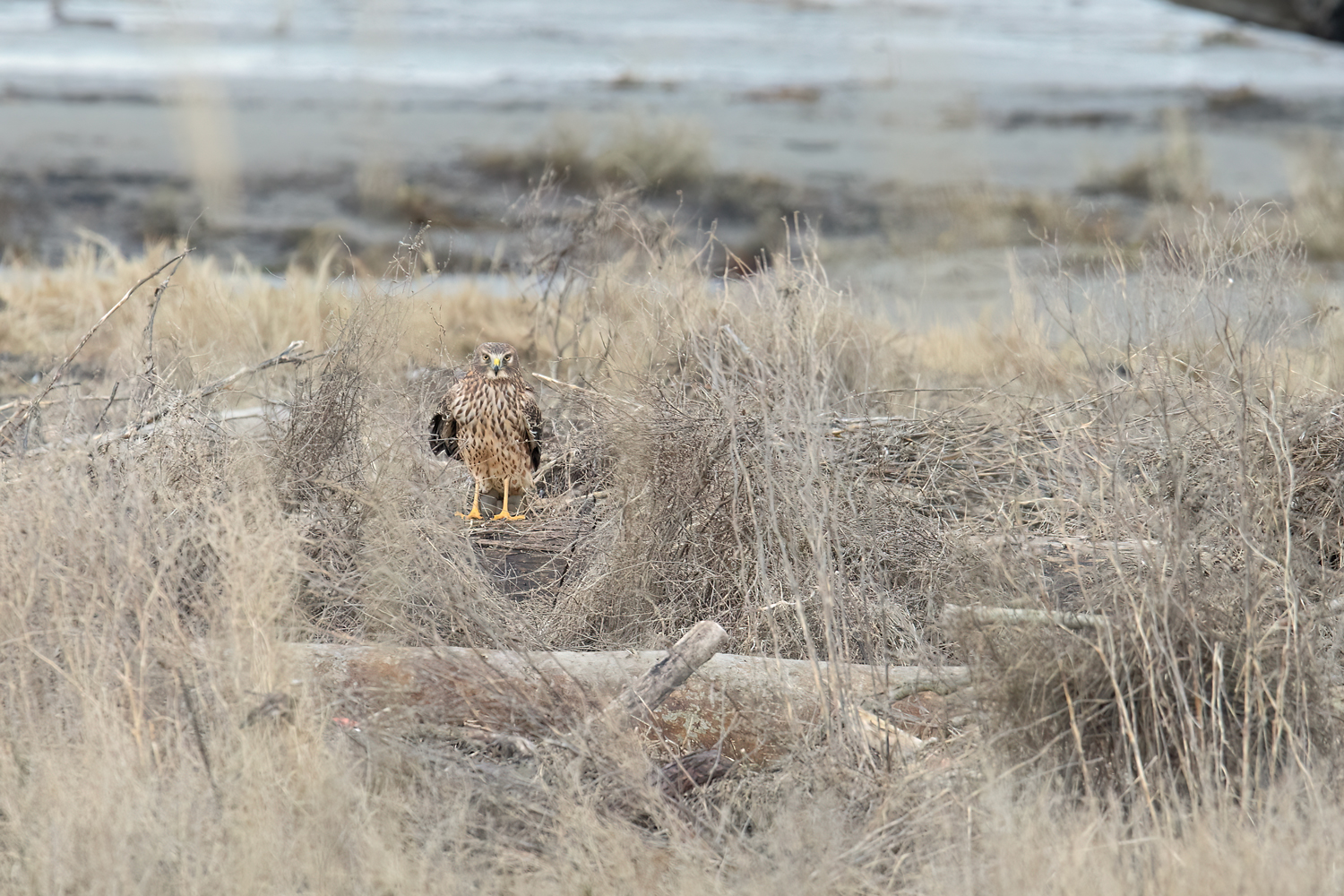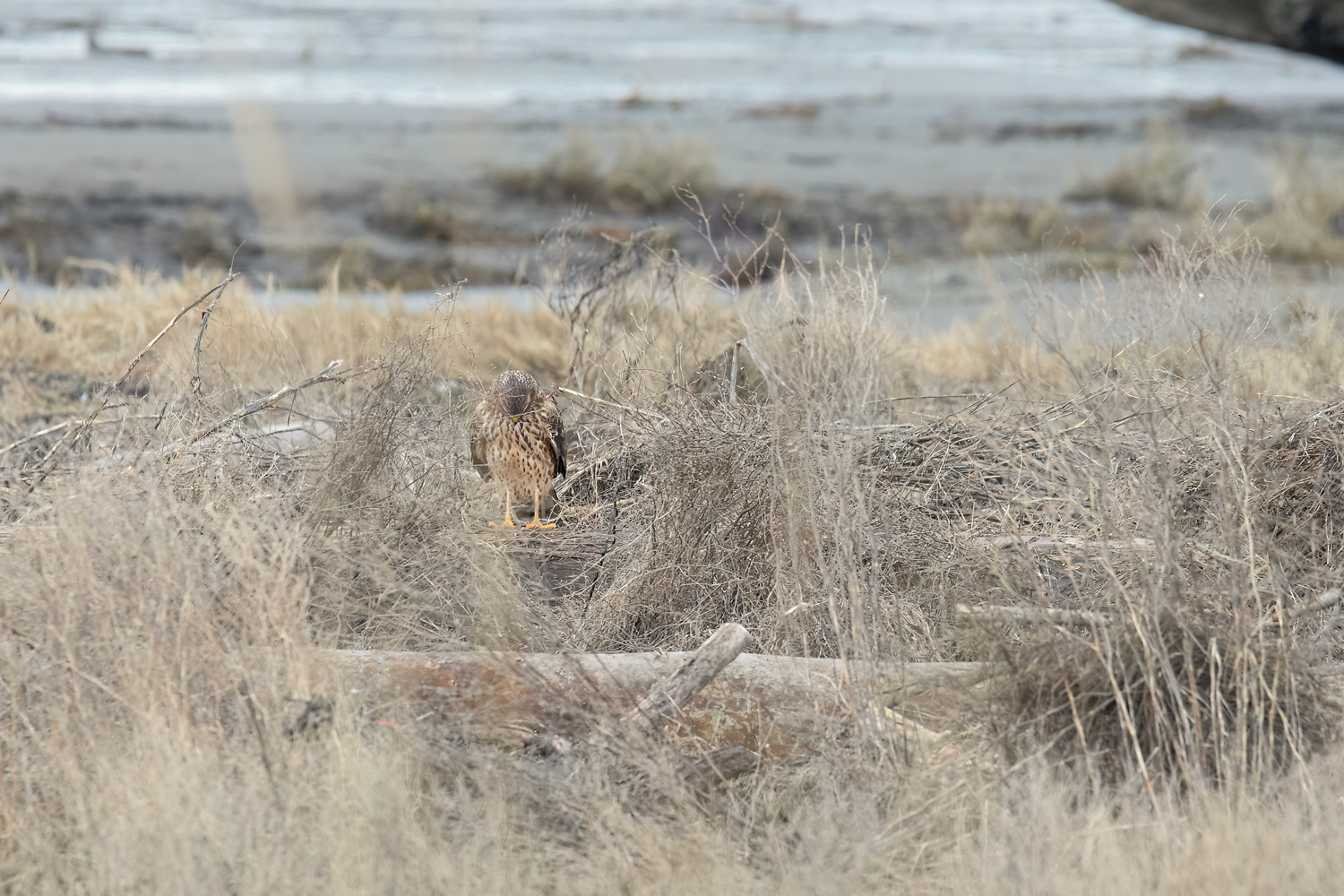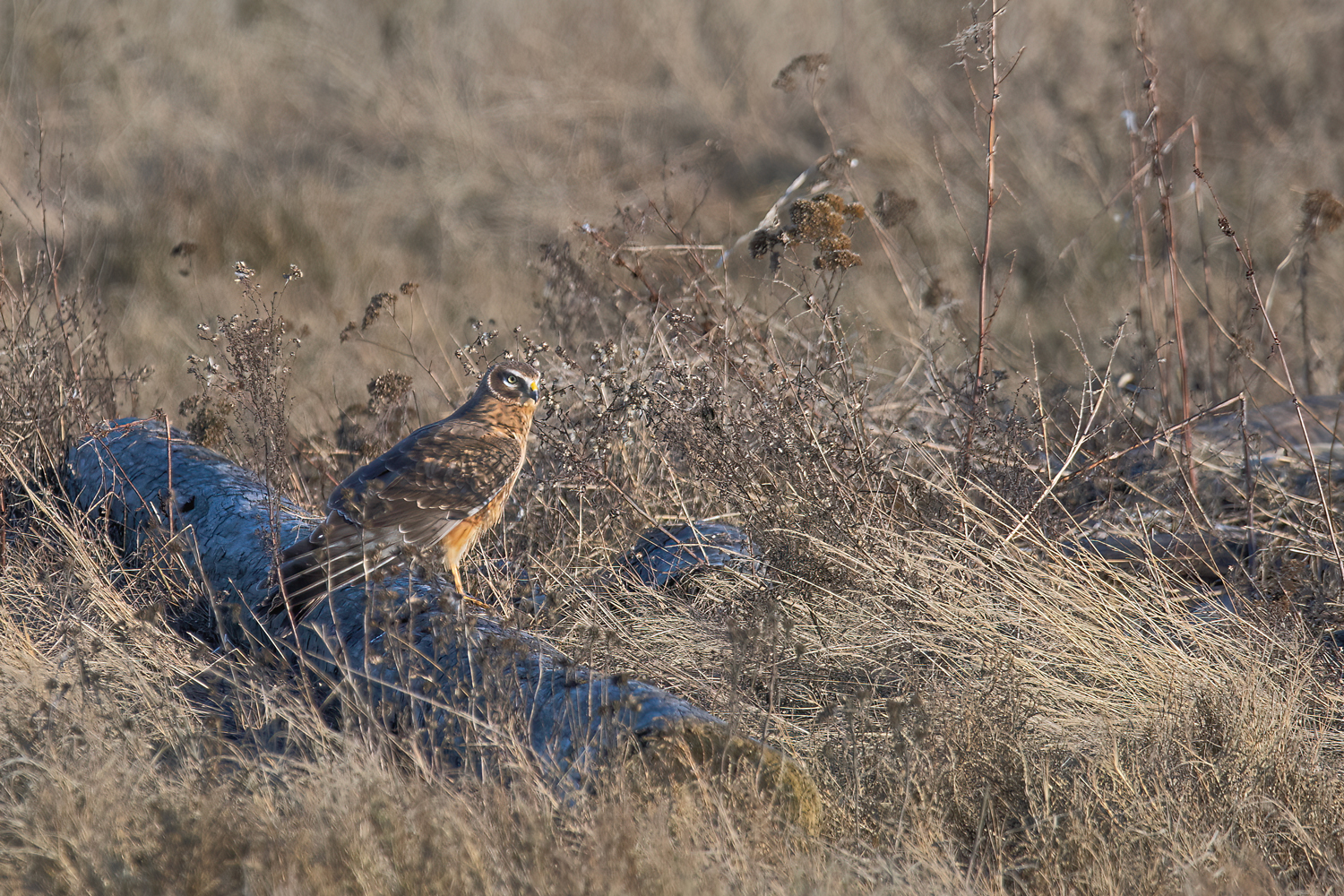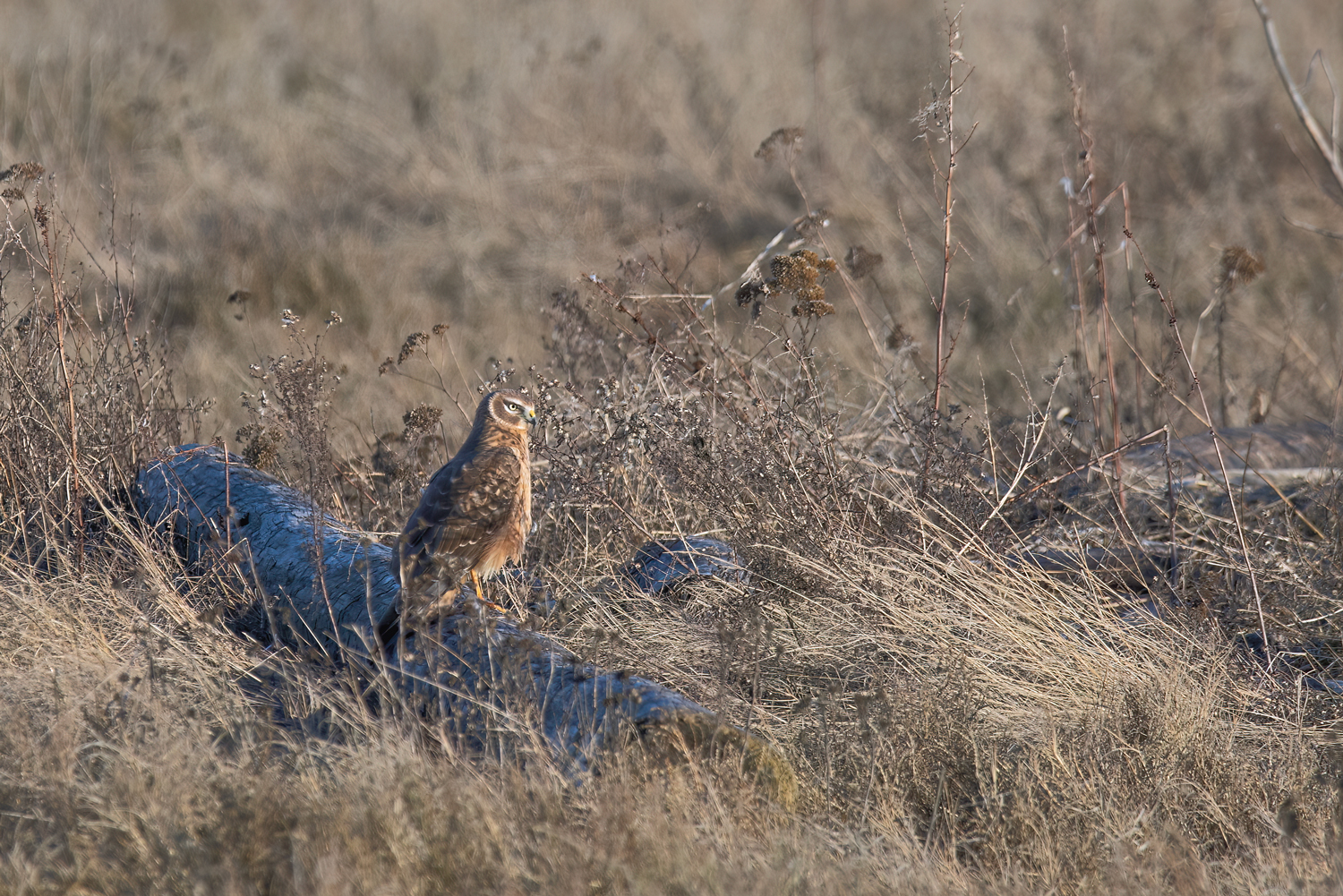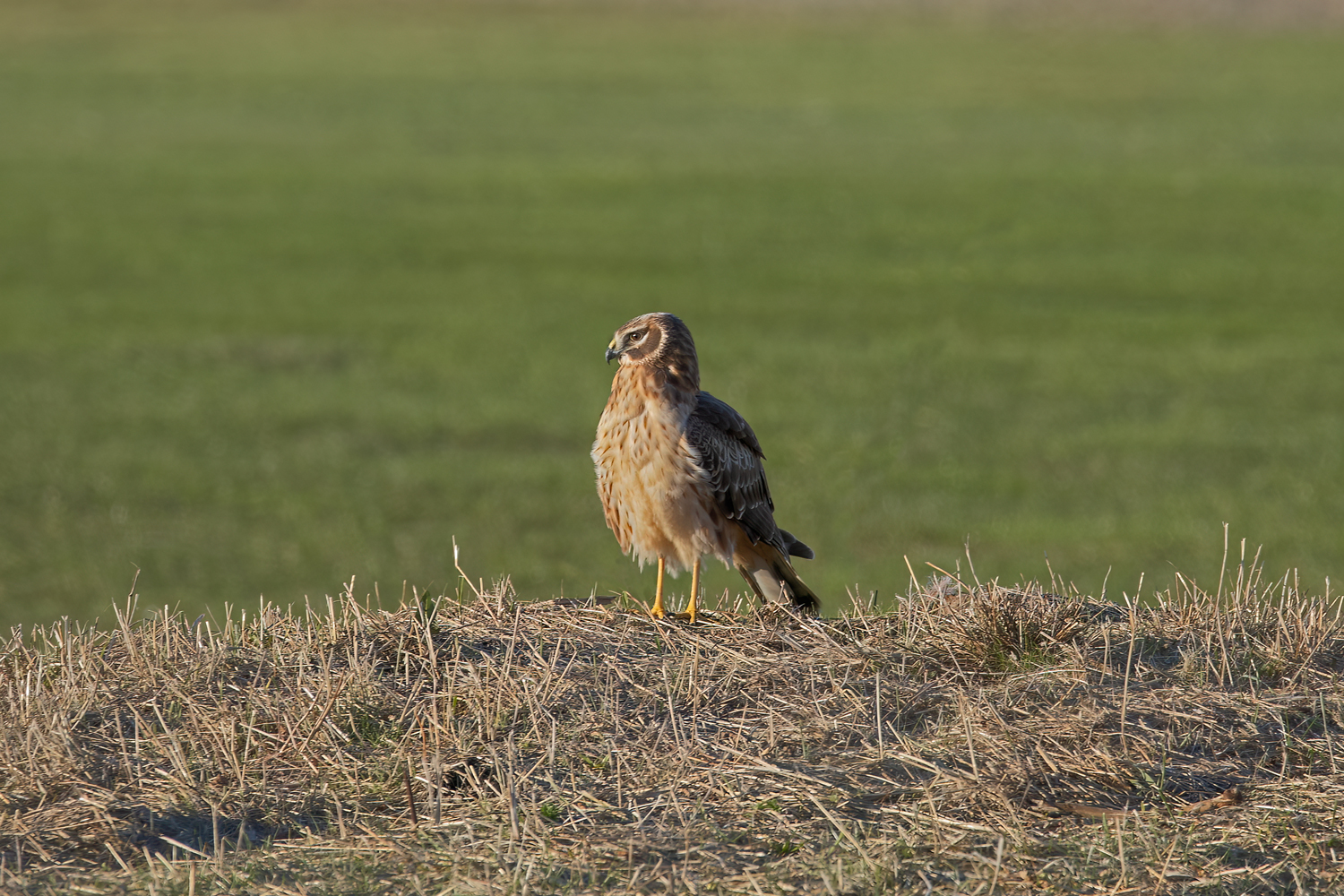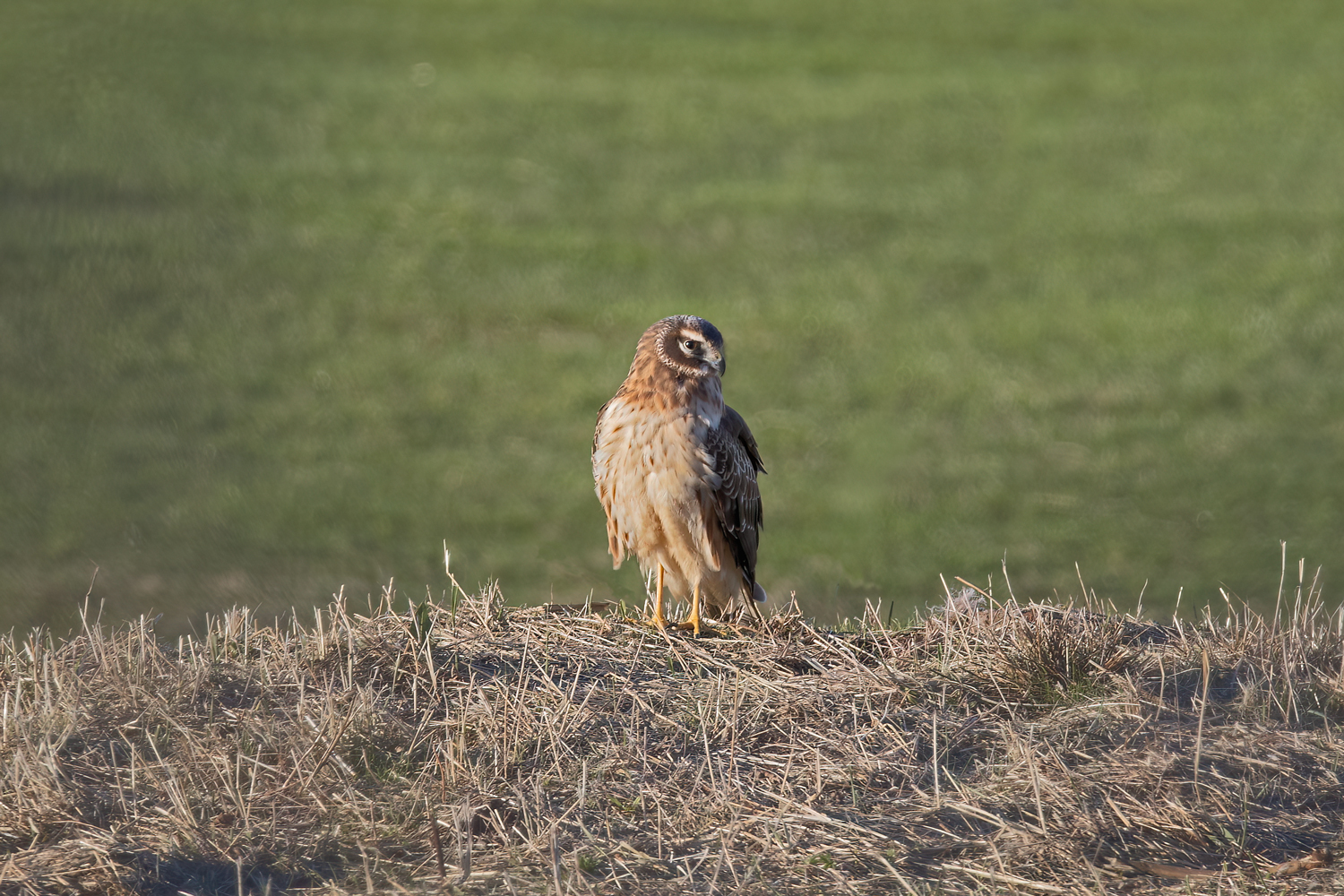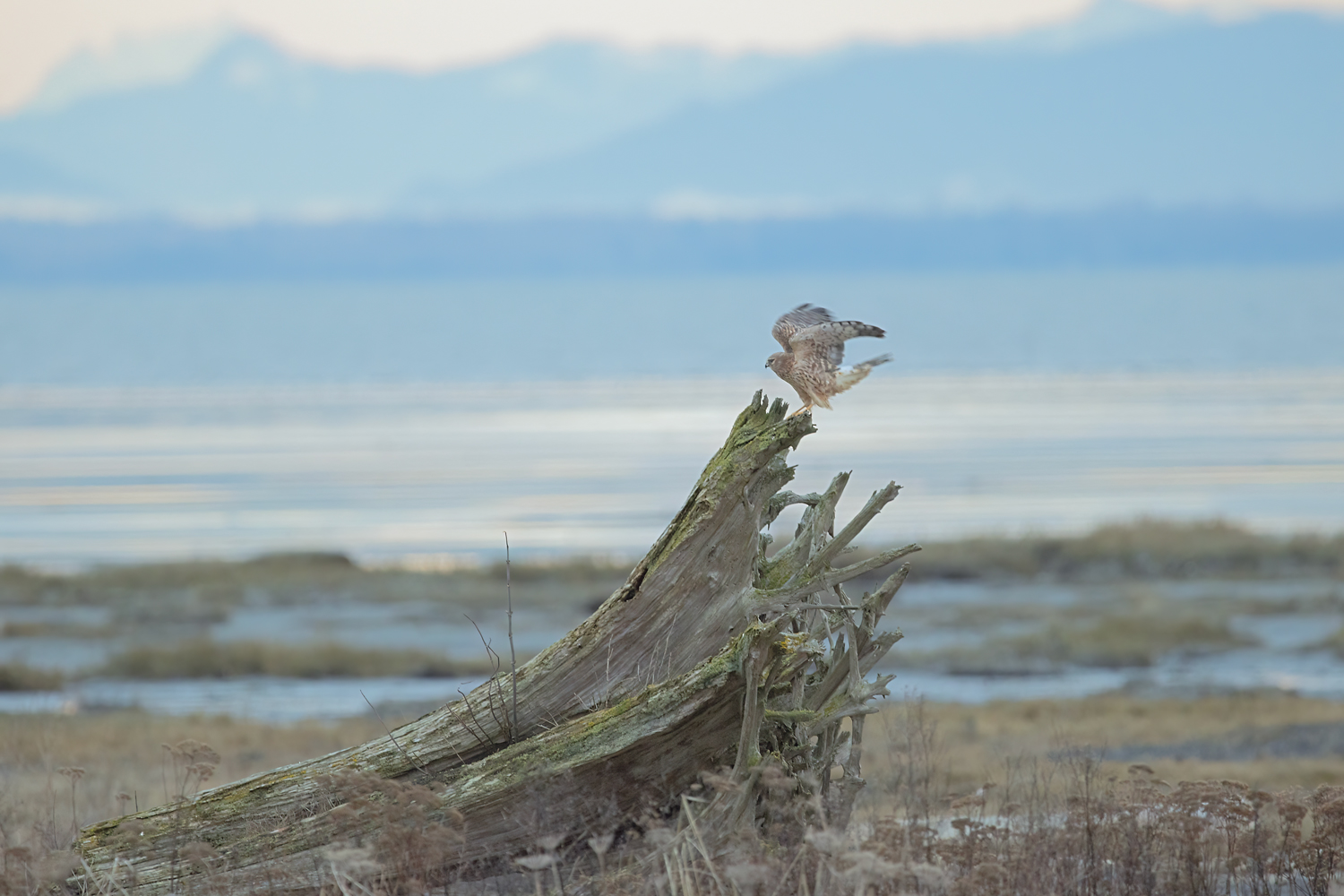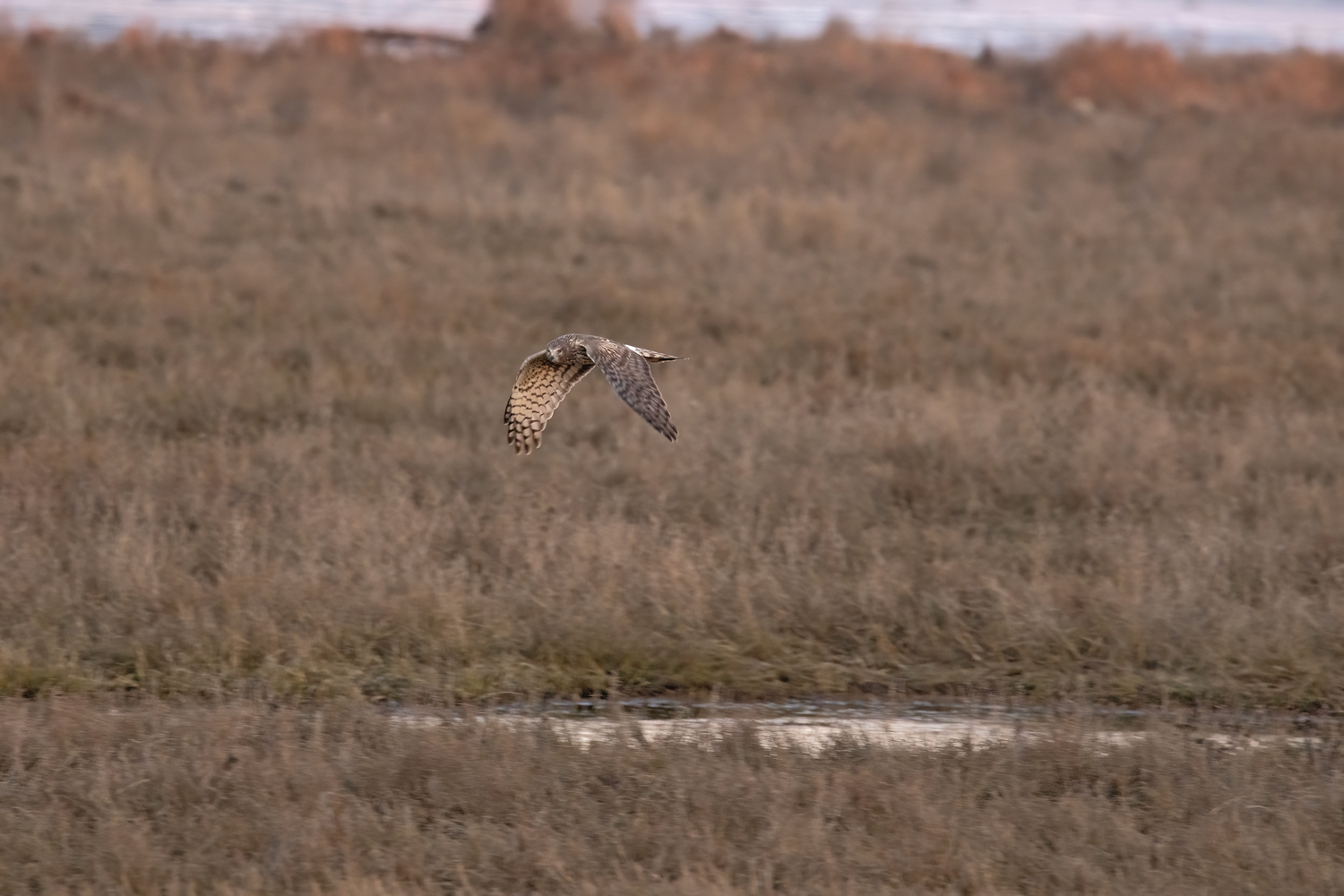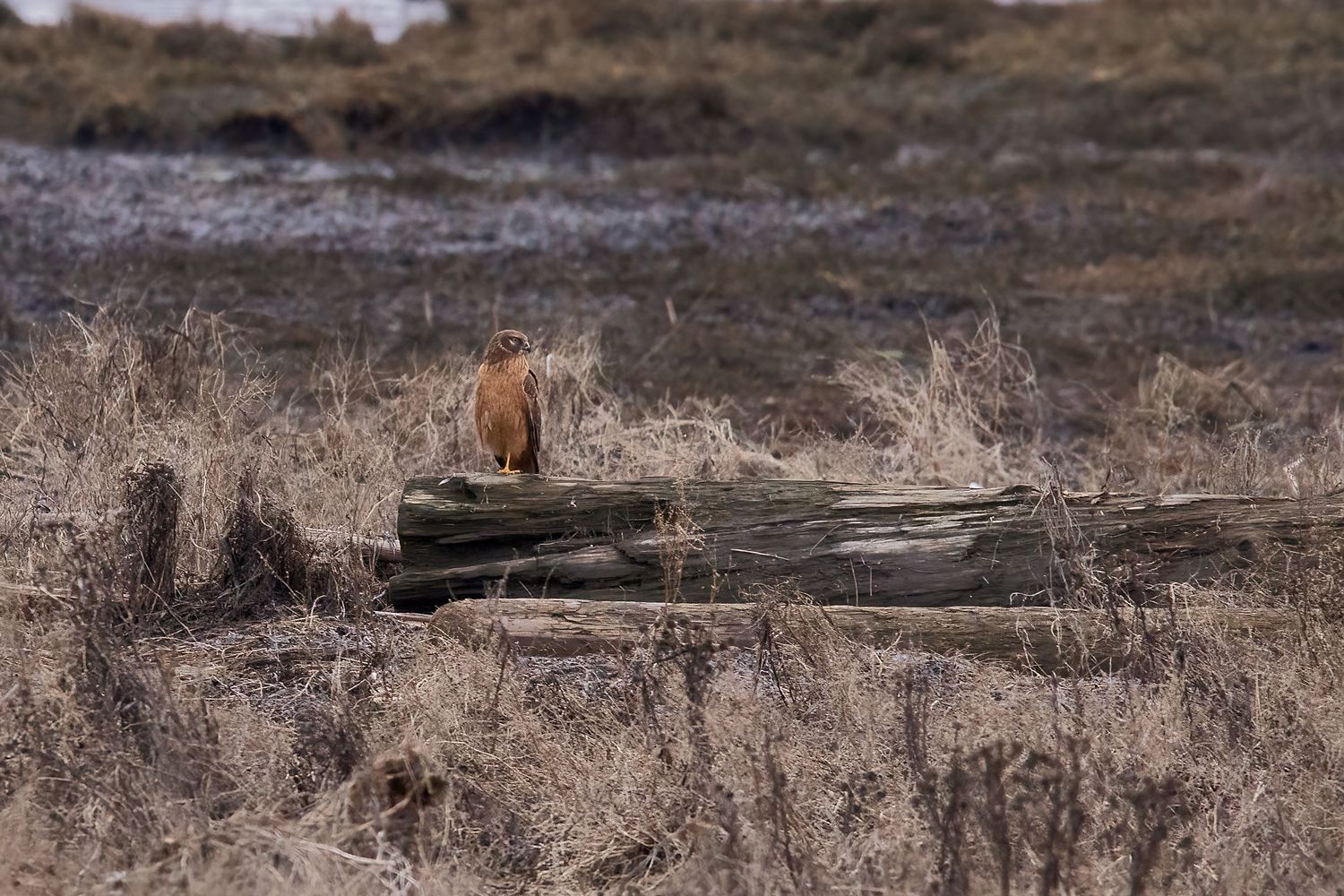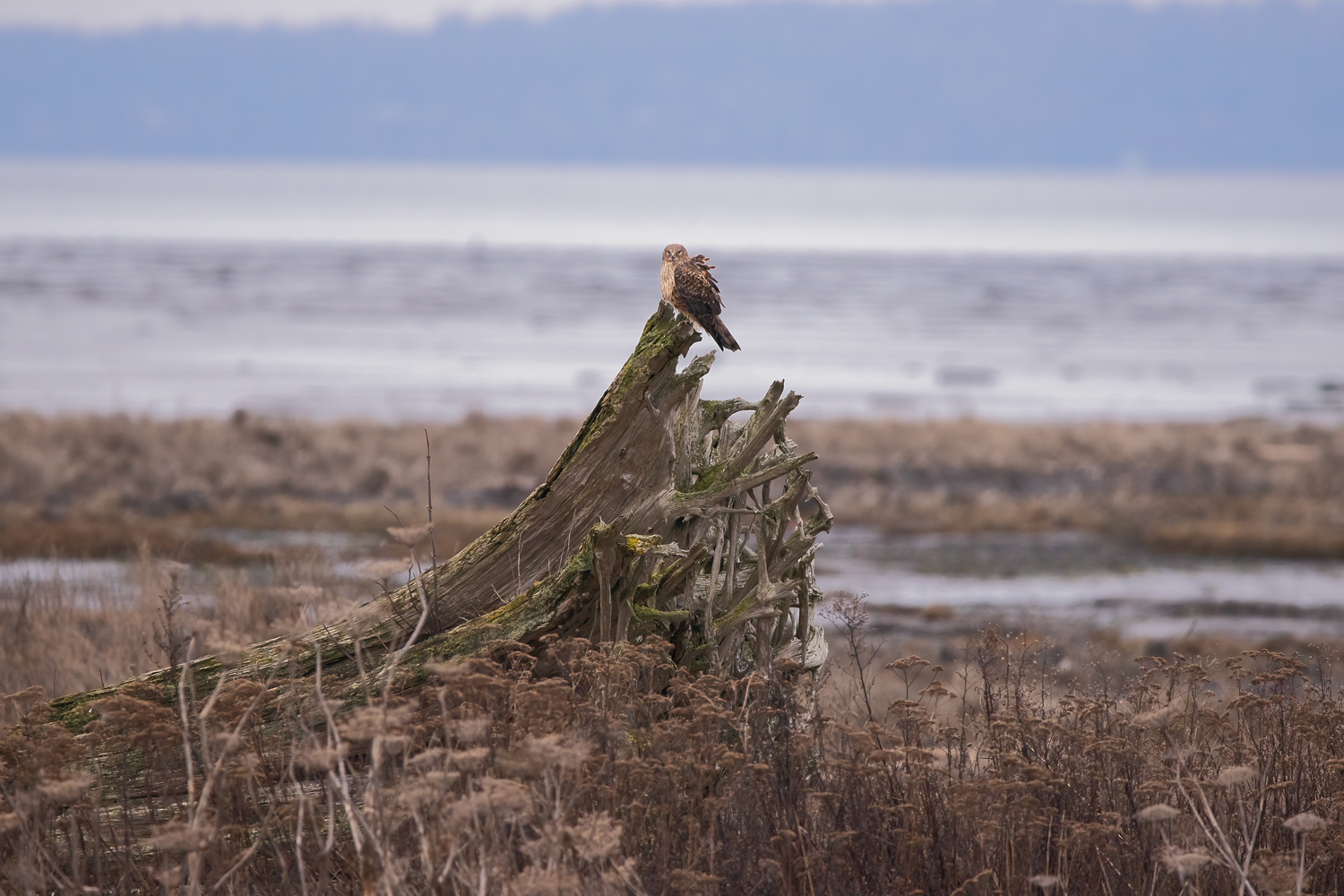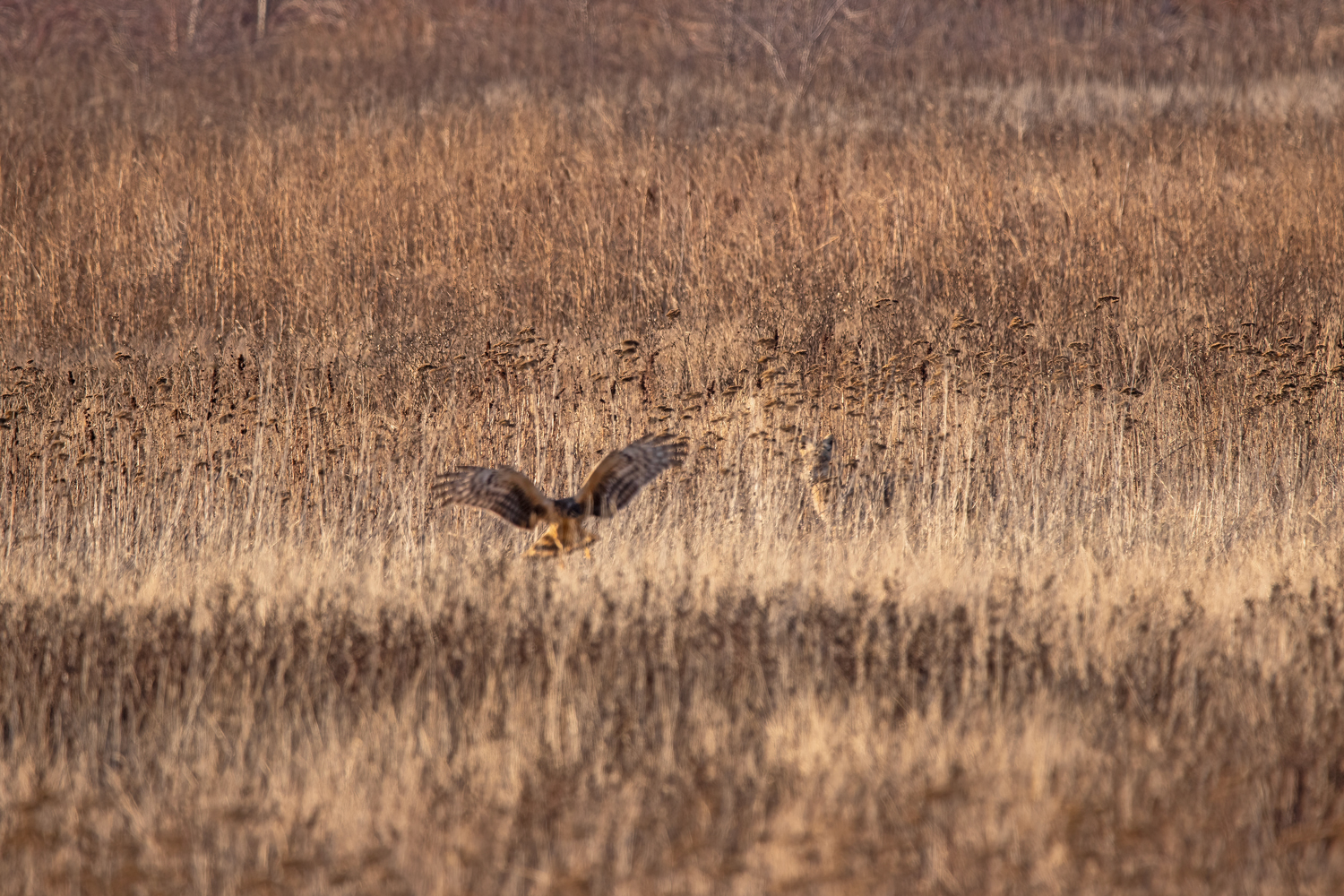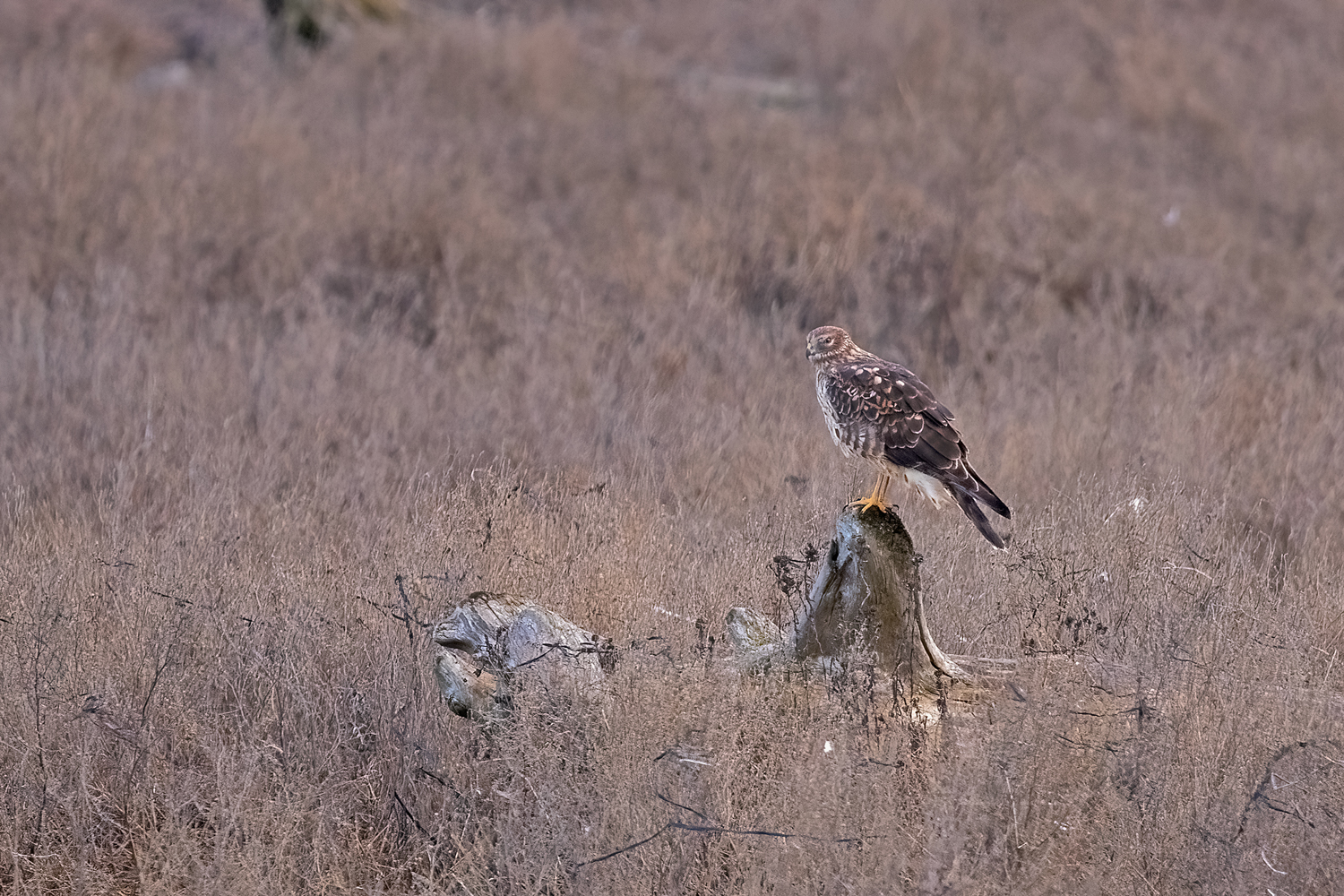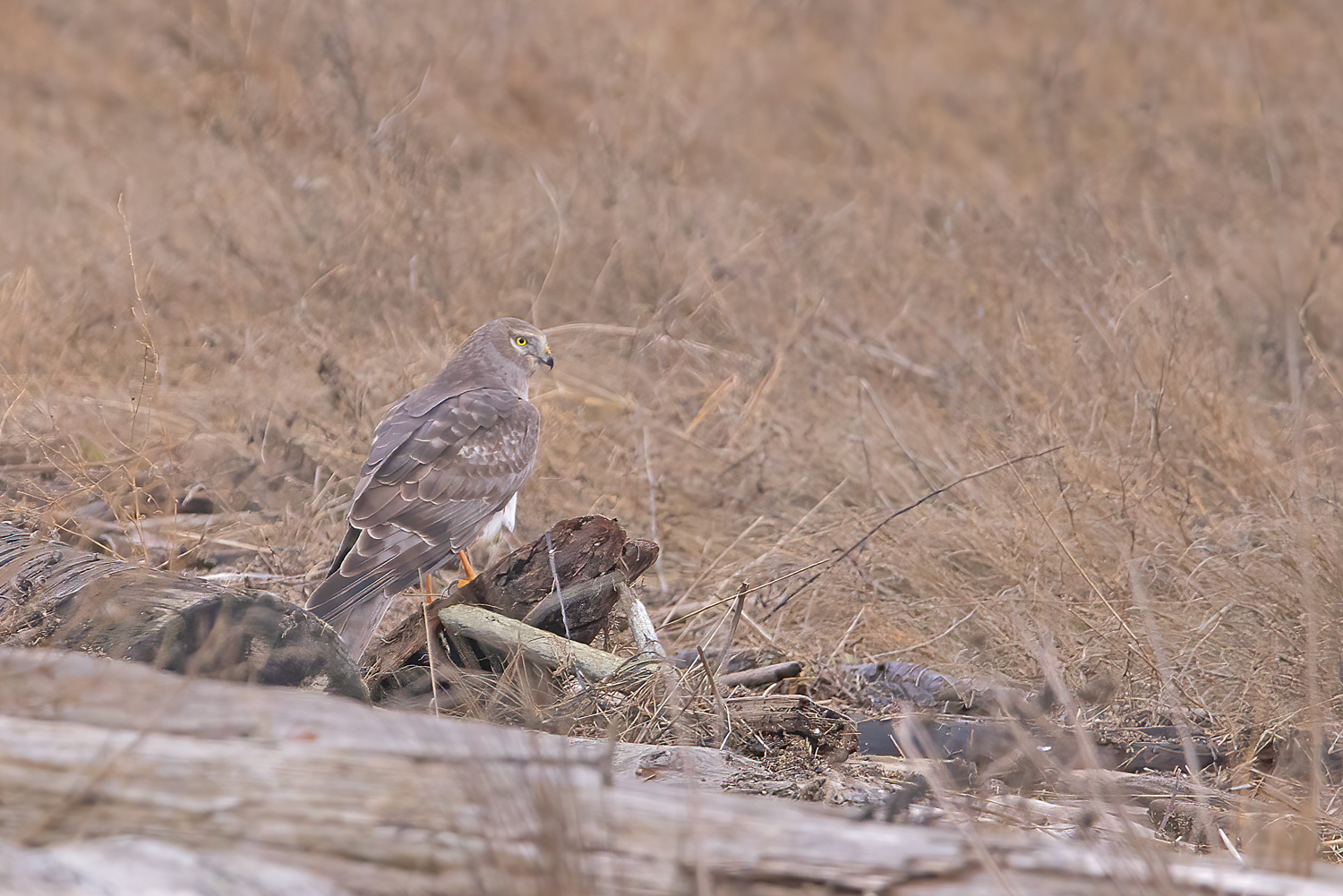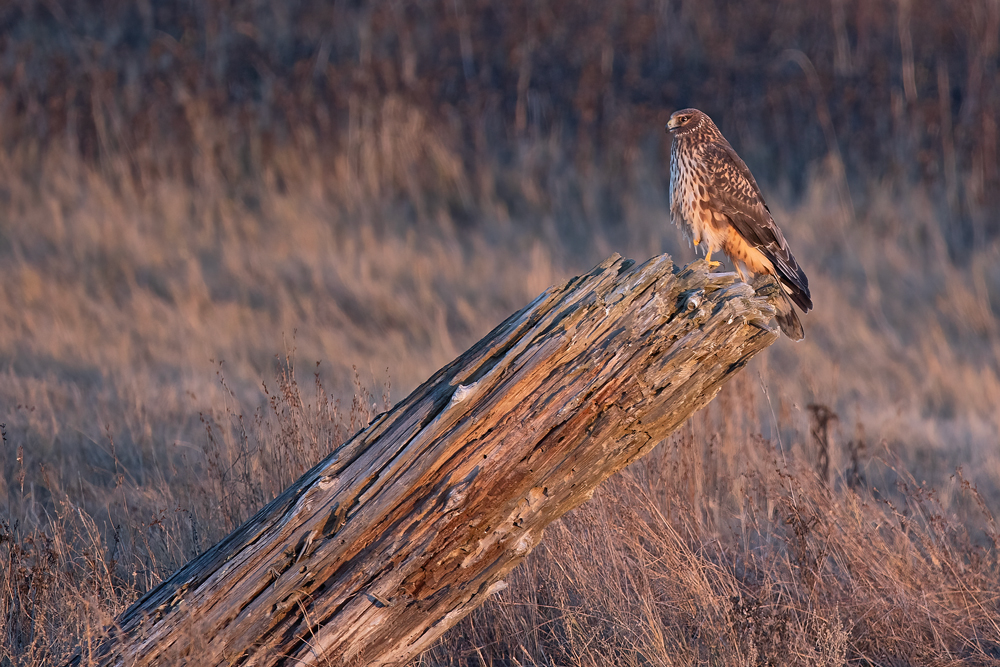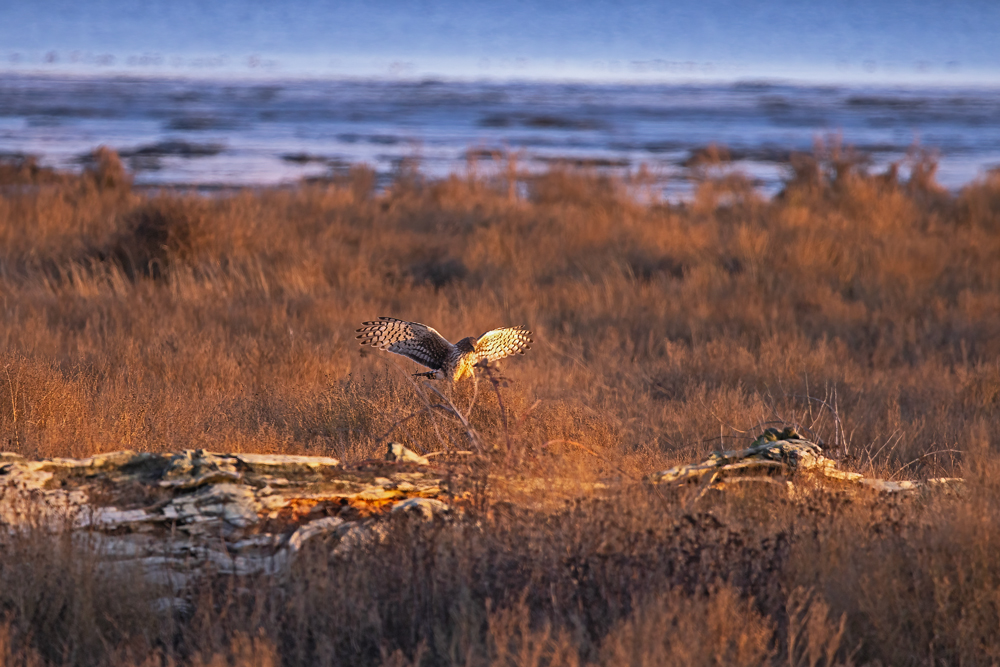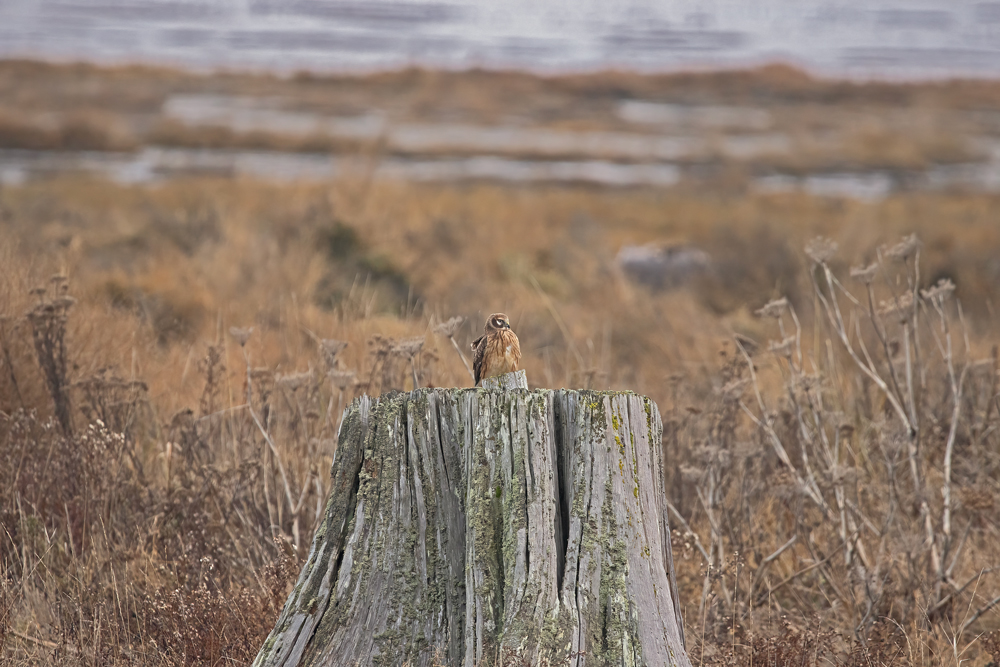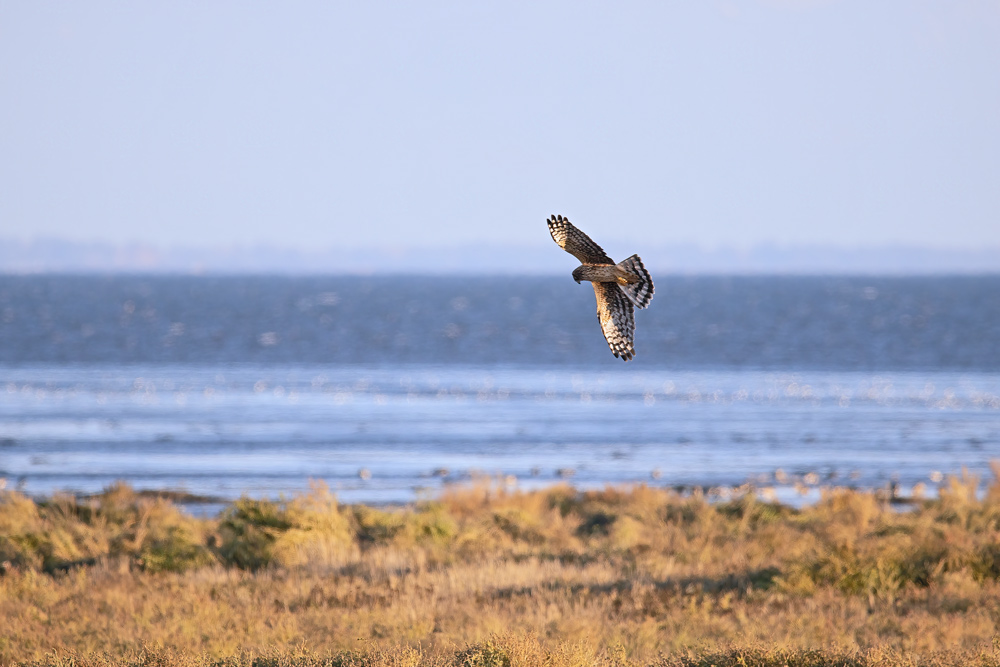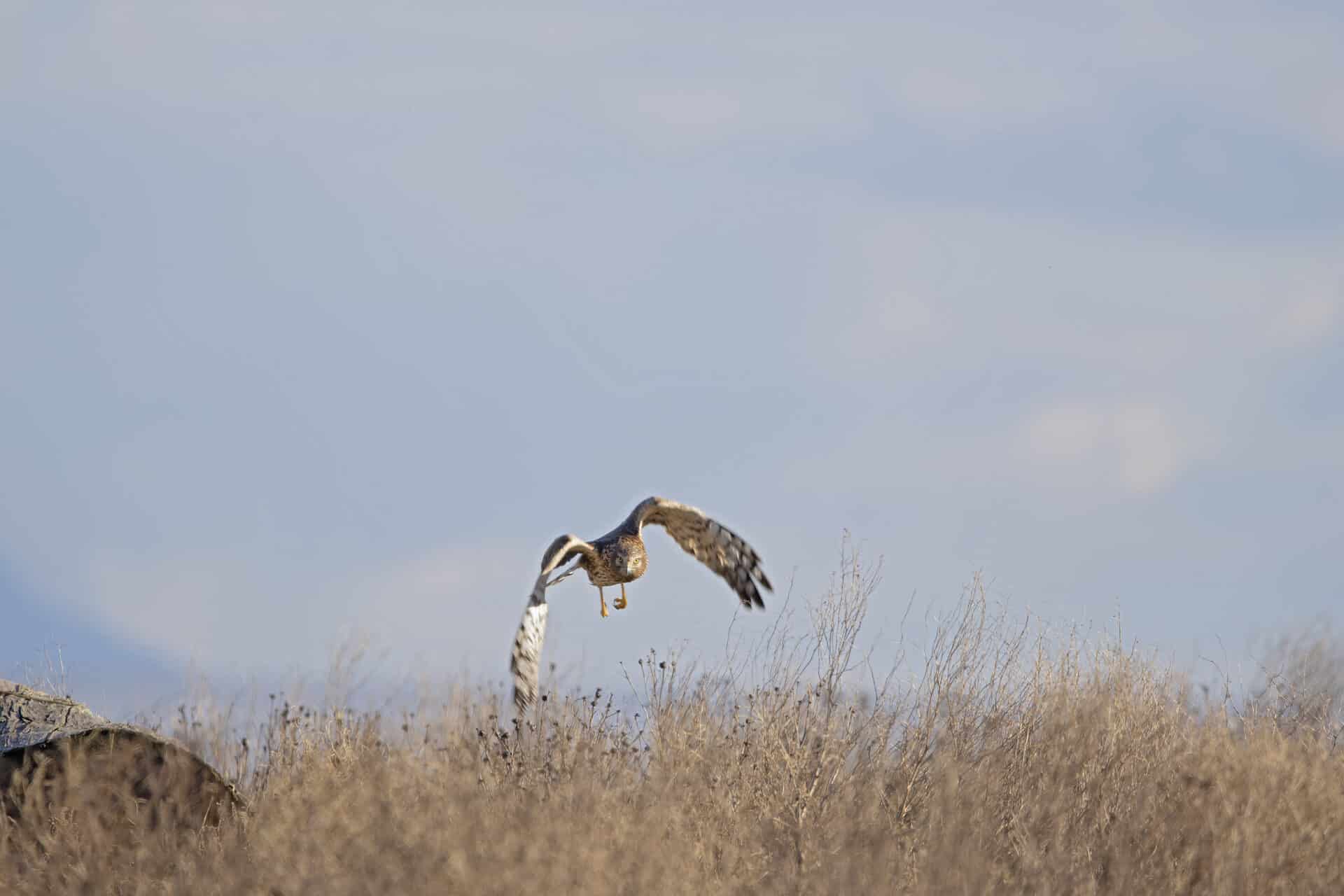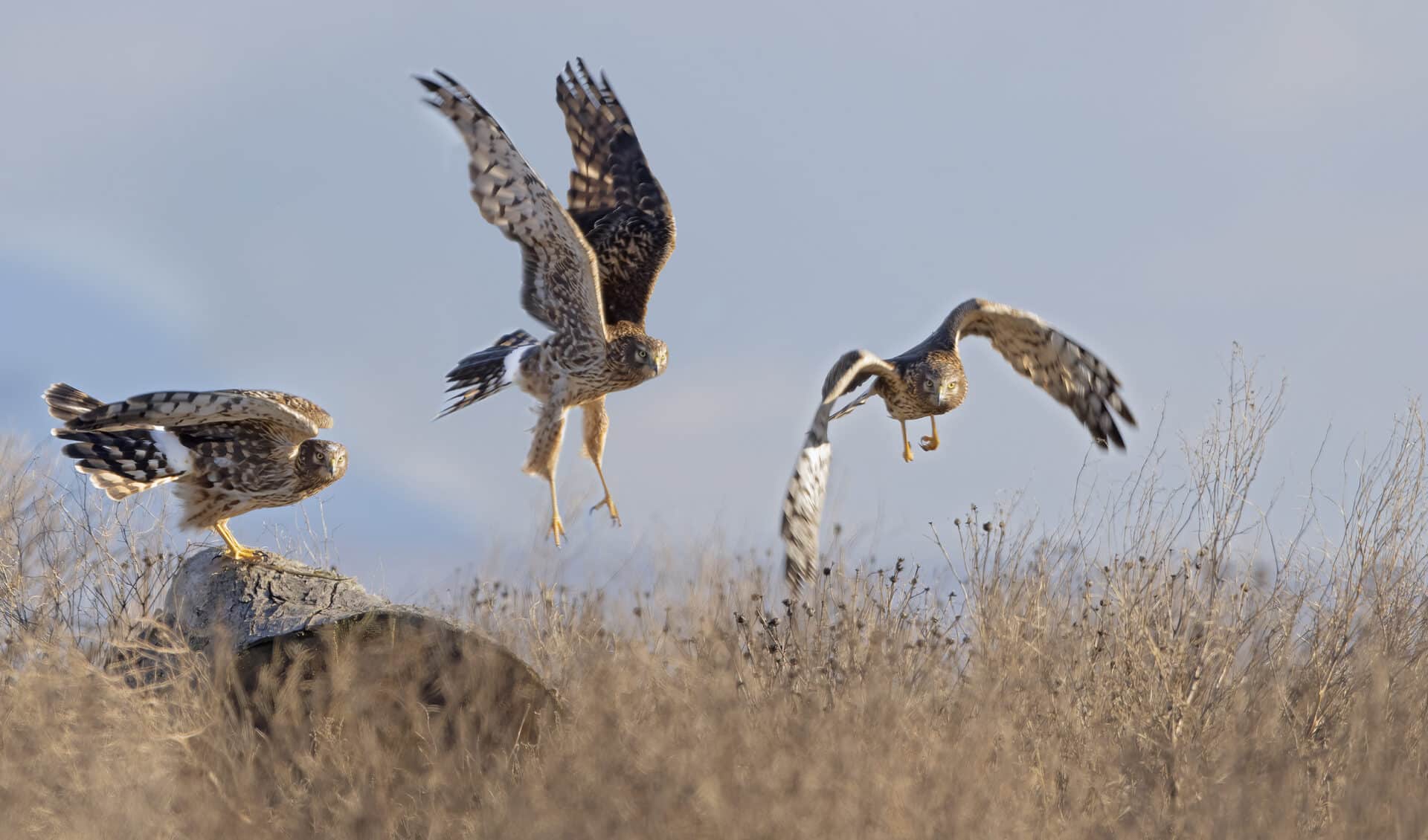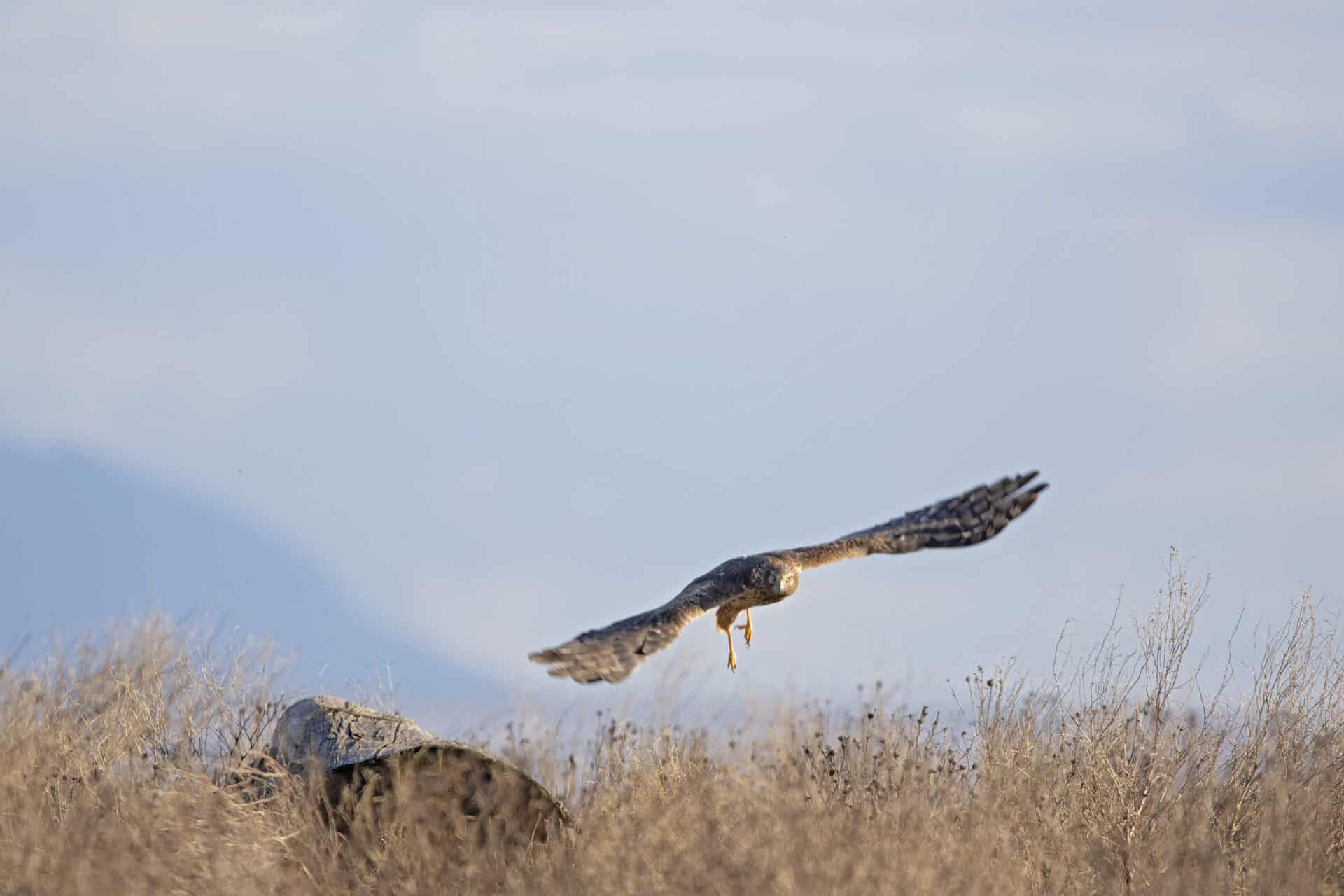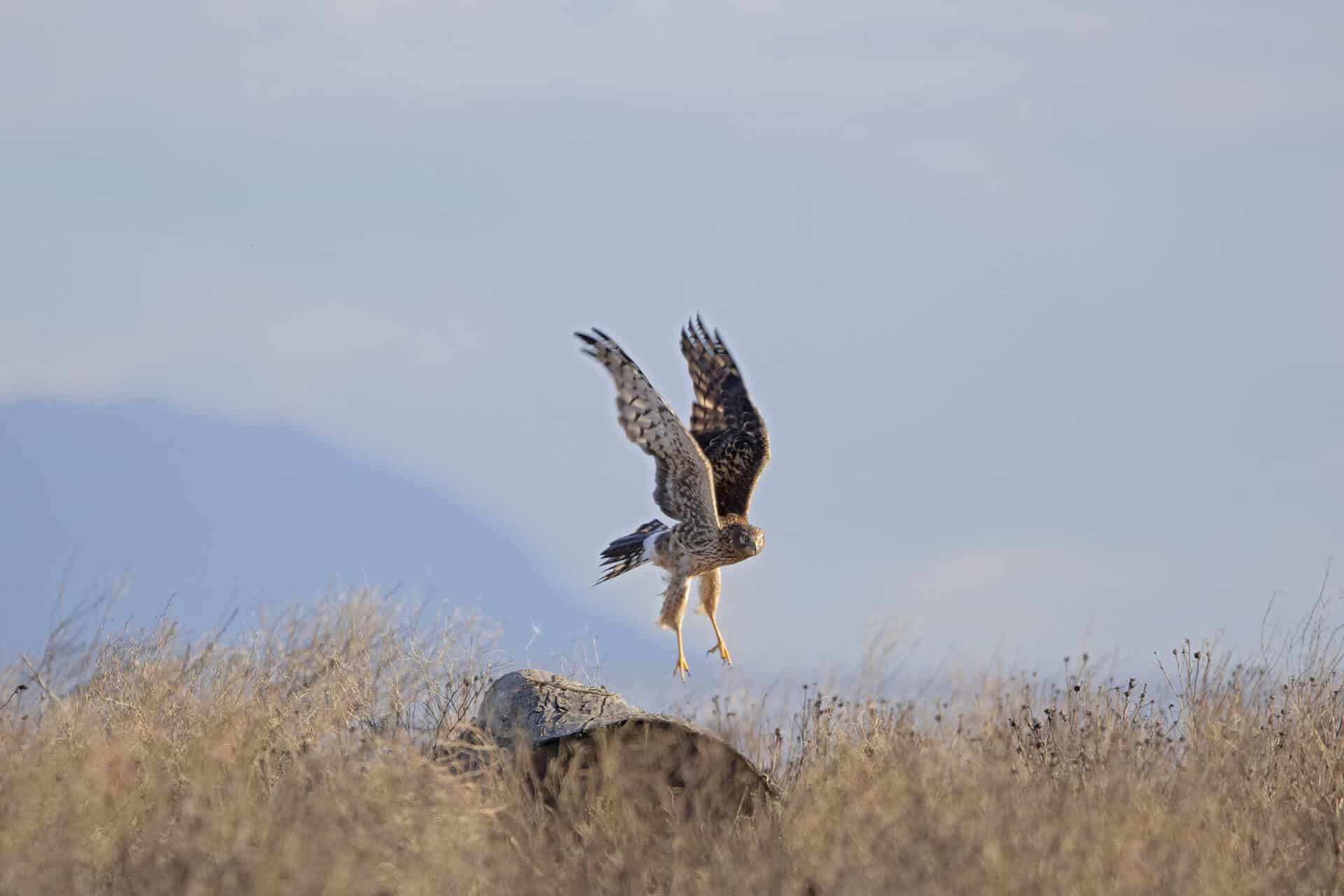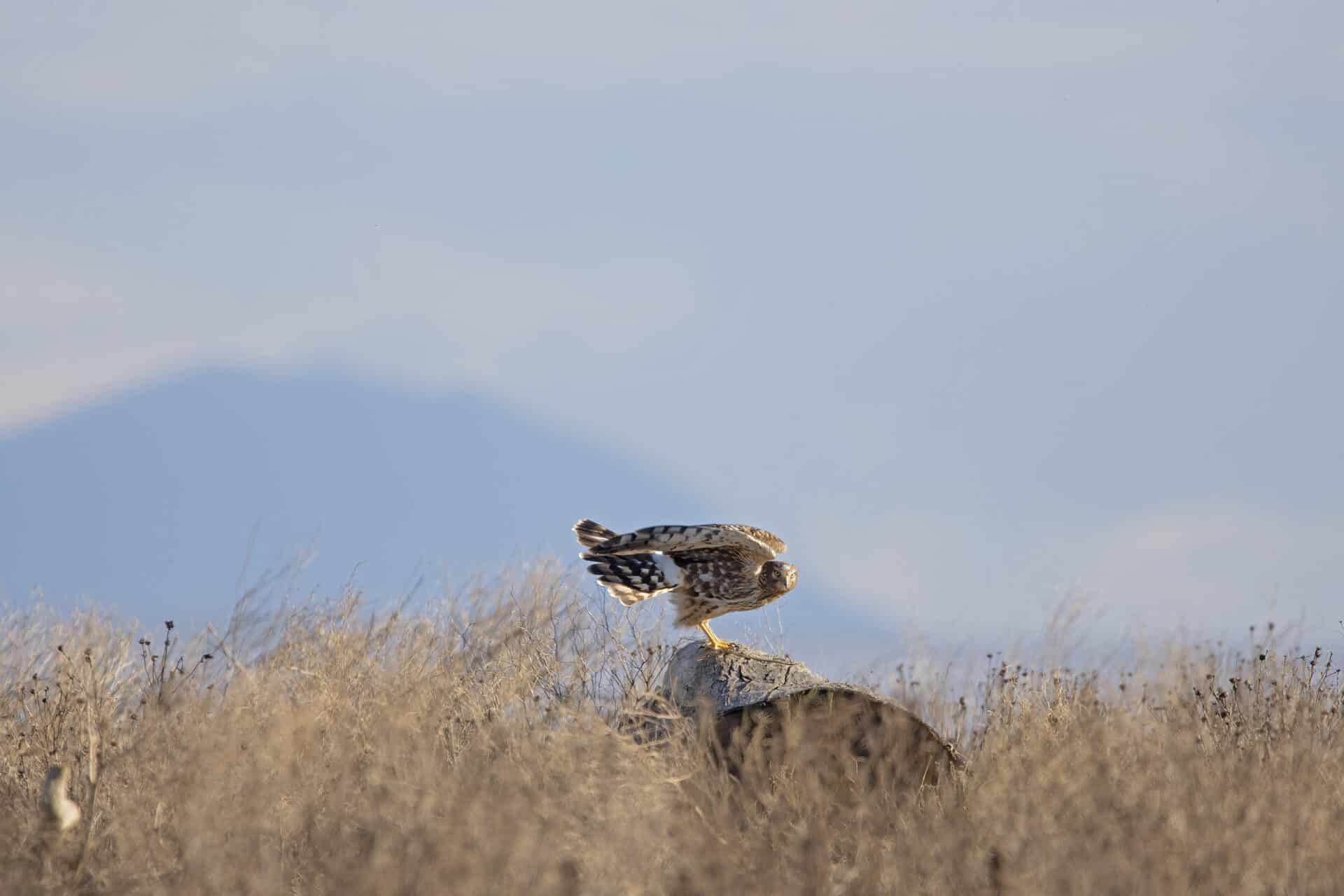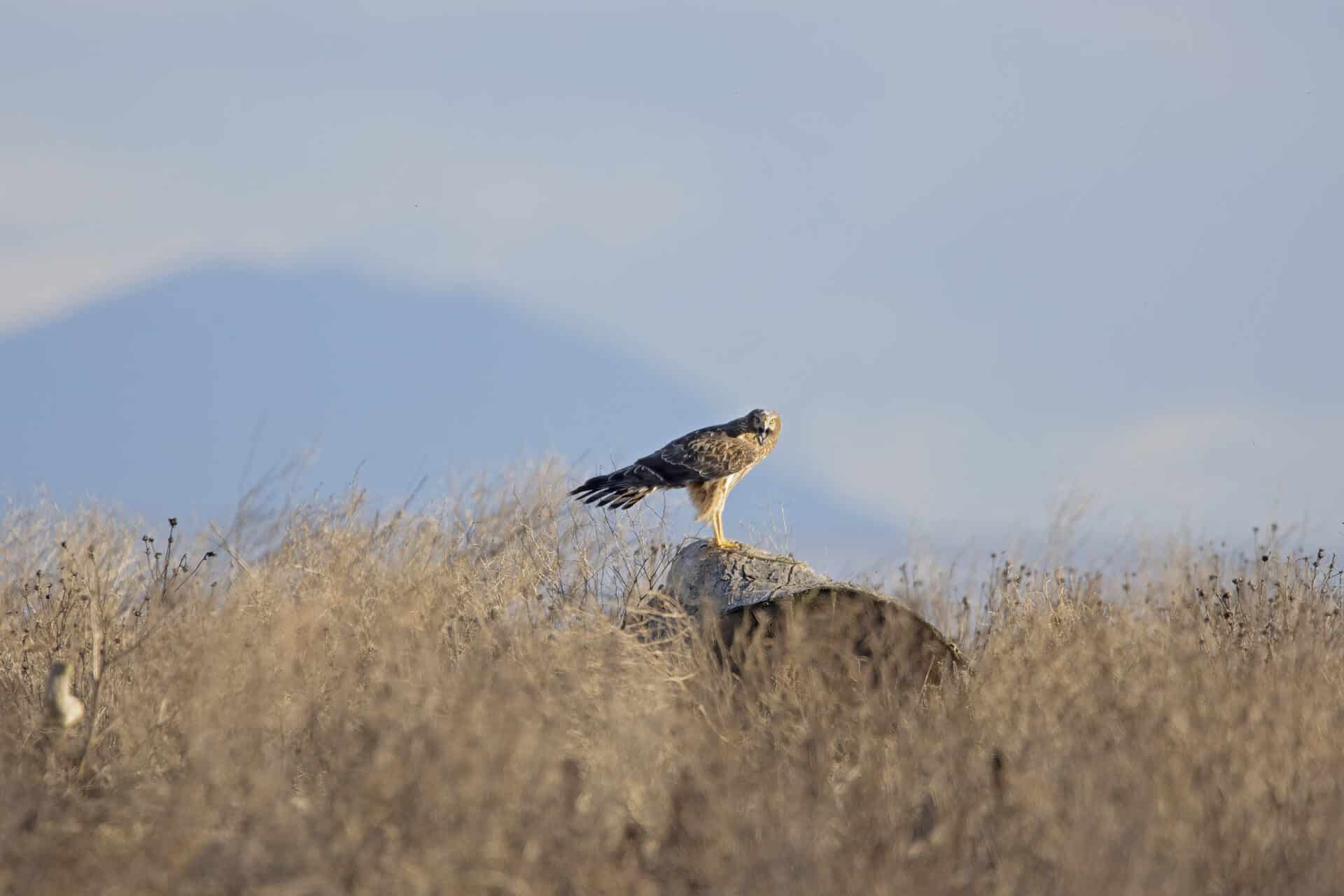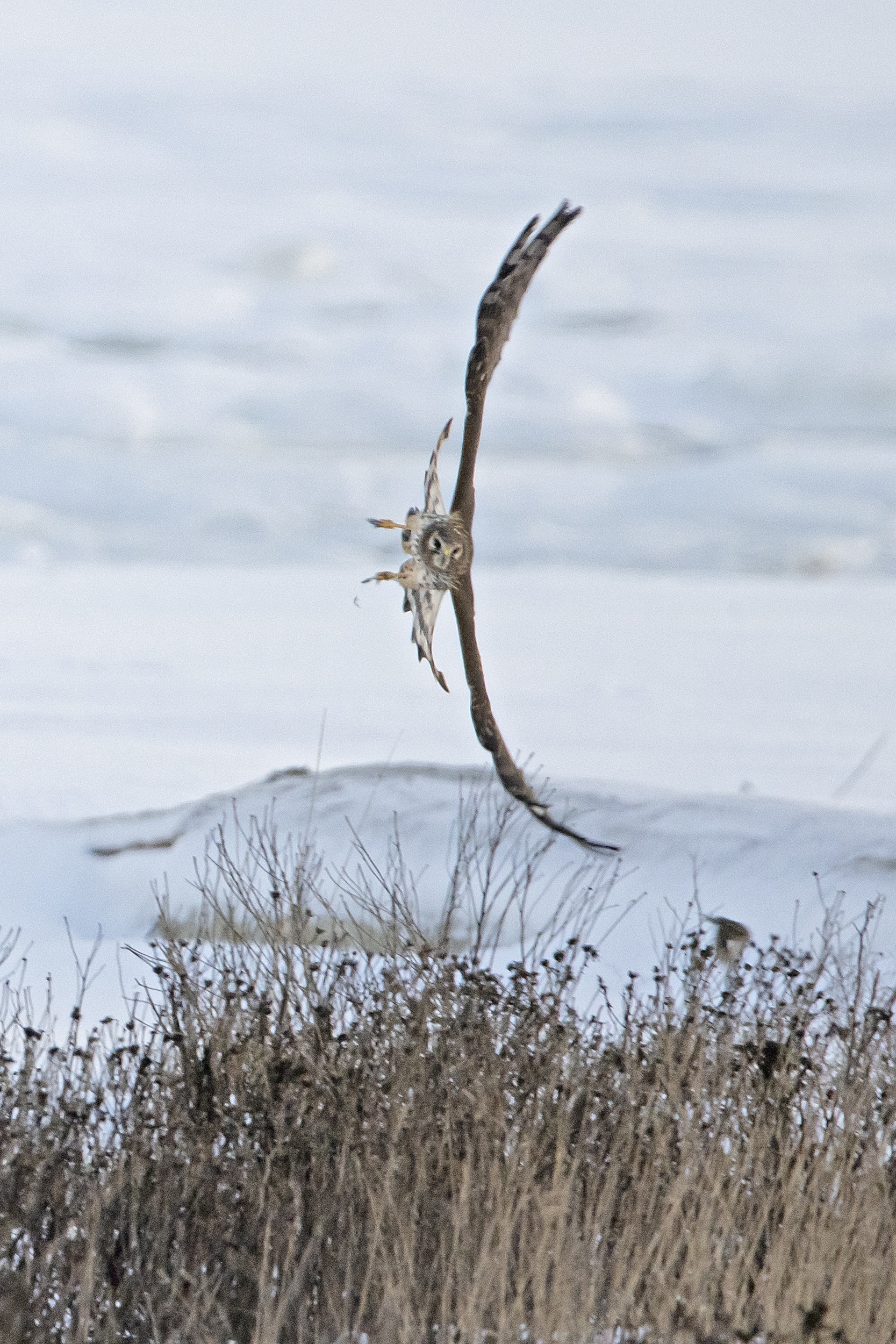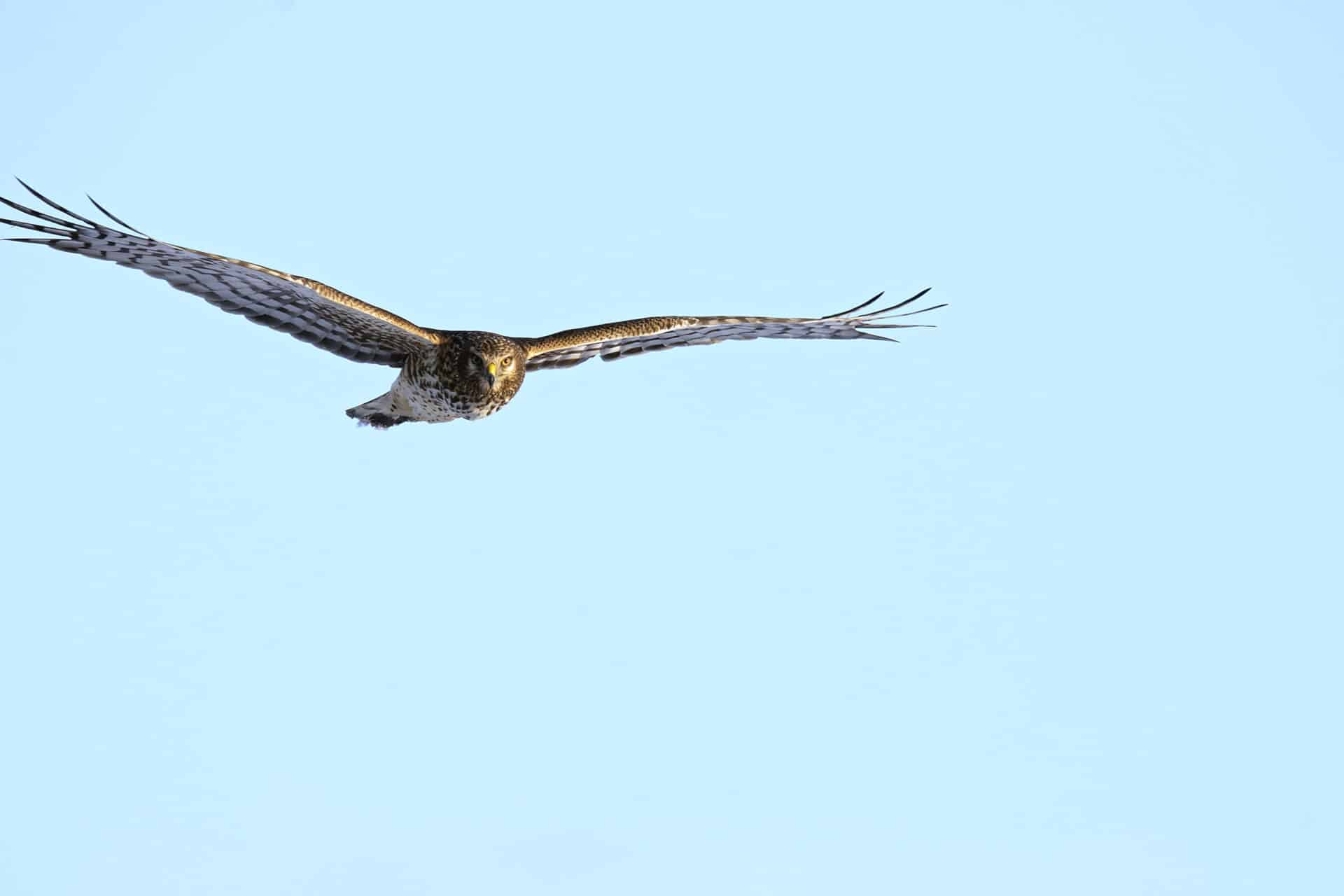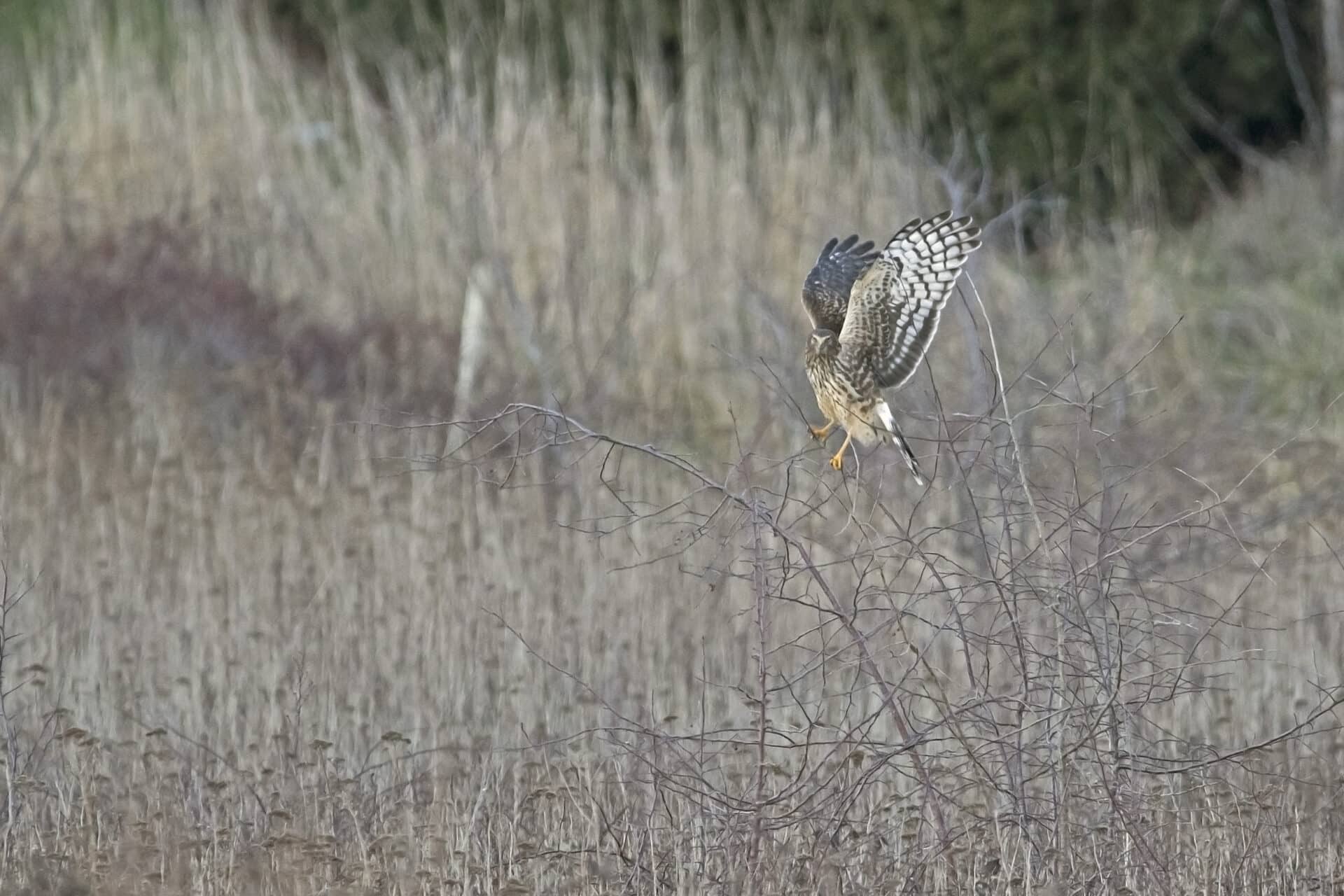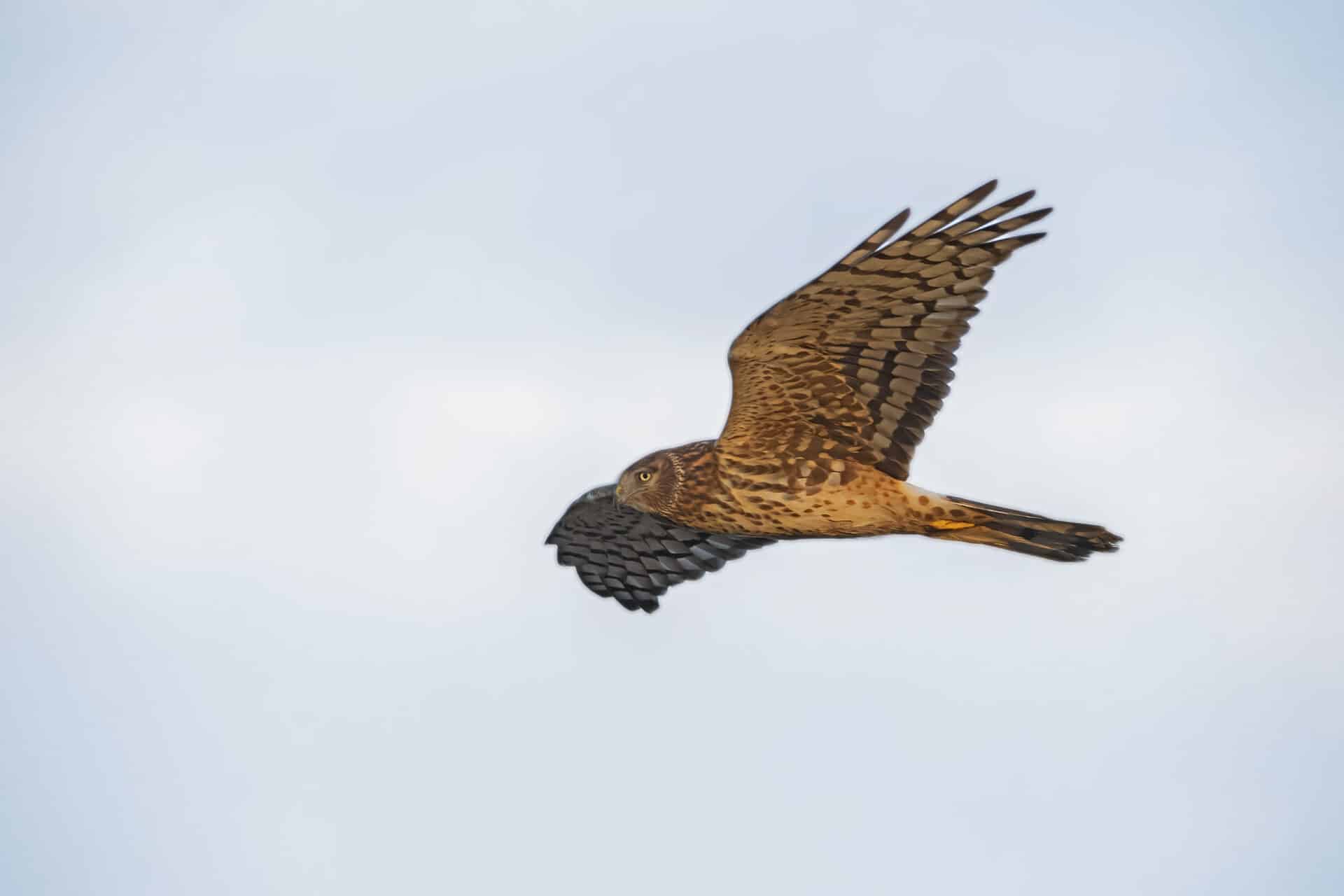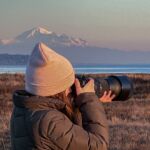If you’ve ever visited Boundary Bay in British Columbia, then no doubt you are familiar with the Northern Harriers that soar over the marshy grasslands. Northern Harriers are abundant in the area, though not always easy to get a photo of — perhaps with a bigger lens and if I sat and waited I could get some good in-flight shots, but for now, I just hope that one lands close enough for my 600mm to capture.
Quick Facts:
Latin Name: Circus hudsonius
Size: 46 – 50cm with wingspan of 102 – 118cm
Lifespan: Longest on record is 15 years and 4 months
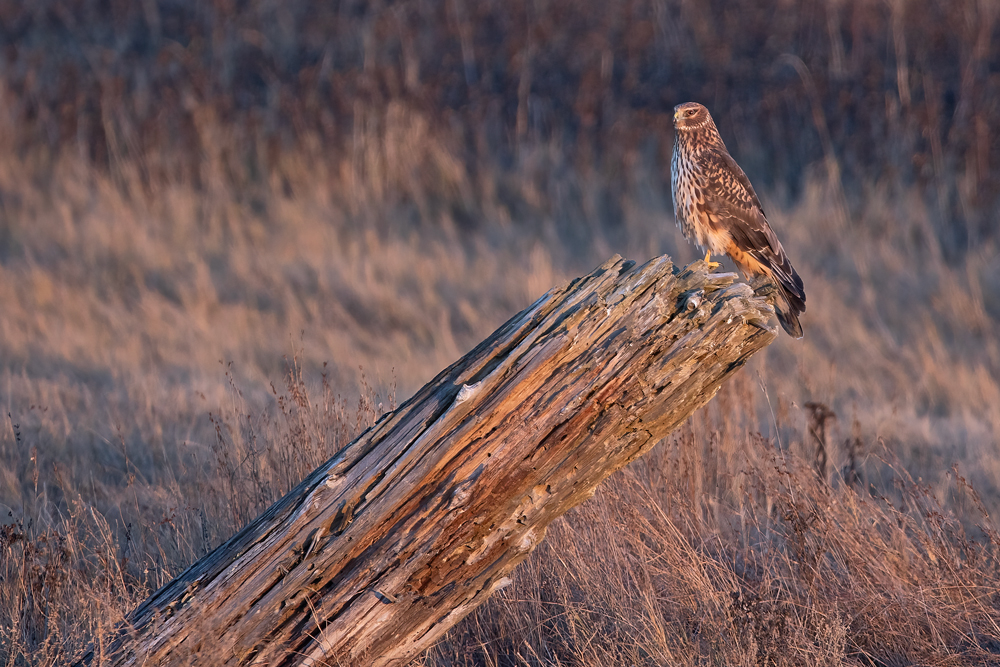
Finding Northern Harriers
Characteristics
You know you have a Northern Harrier and not a different hawk from their faces. Northern Harriers have a very distinct, owl-like face which is very visible at a closer range.
Female harriers have brown and creamy white plumage, while males are grey and white (hence the nickname “grey ghost”). This is known as “sexual dimorphism”, and is unusual in hawks. Both males and females have a white patch on their rump.
Habitat
Northern Harriers can be found across most of North America, with the exception of some of the northernmost parts of Canada.
They inhabit wide-open habitats, including arctic tundra and prairie grasslands. They nest in the grass and wetland vegetation of these areas and prefer places with good ground cover.

Diet
Northern harriers will feast on various prey items, including rats, voles, songbirds, flickers, doves, and small ducks. They will also eat snakes, toads, frogs, and sometimes carrion. What they hunt depends on what is available in the area.
They hunt low, with males flying lower and faster than females. From what I’ve observed, they are pretty agile in the air and can turn around on a second’s notice.
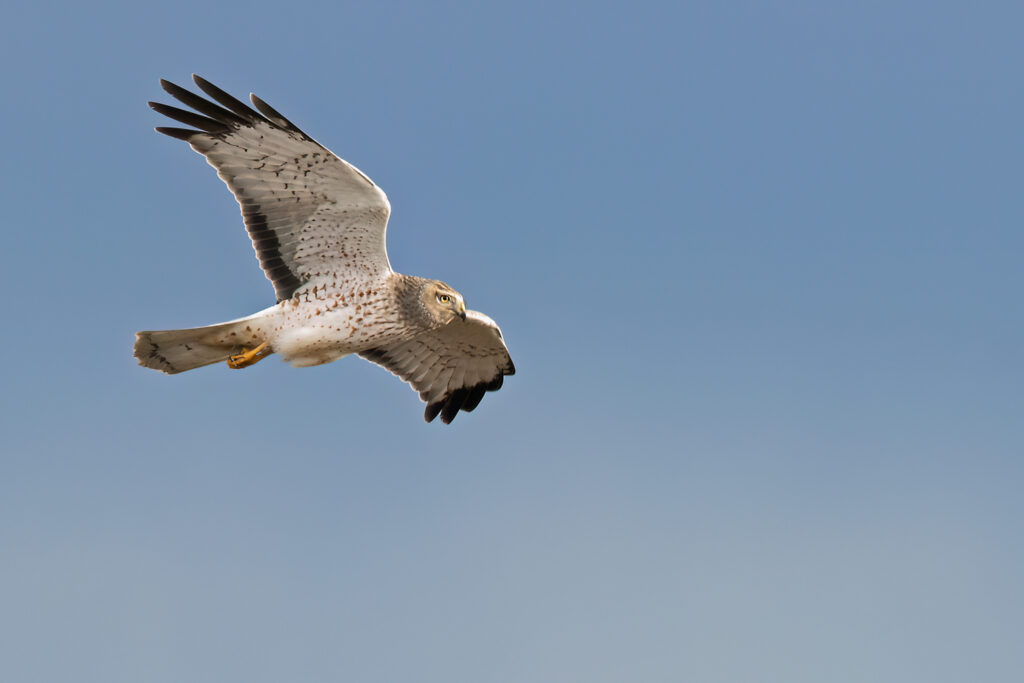
Conservation
The Breeding Bird Survey has closely monitored northern harrier populations and has reported significant decreases in their population since the 1970s. There are regional differences in trends.
the IUCN listed northern harriers as ‘least concern’ in 2014; Wild Species (Canada) listed them as ‘secure’ in 2010; and Bird Conservation Region Strategy listed them as a ‘priority species’ in 2013.
Threats to Northern Harriers include pesticide exposure and wetland drainage.
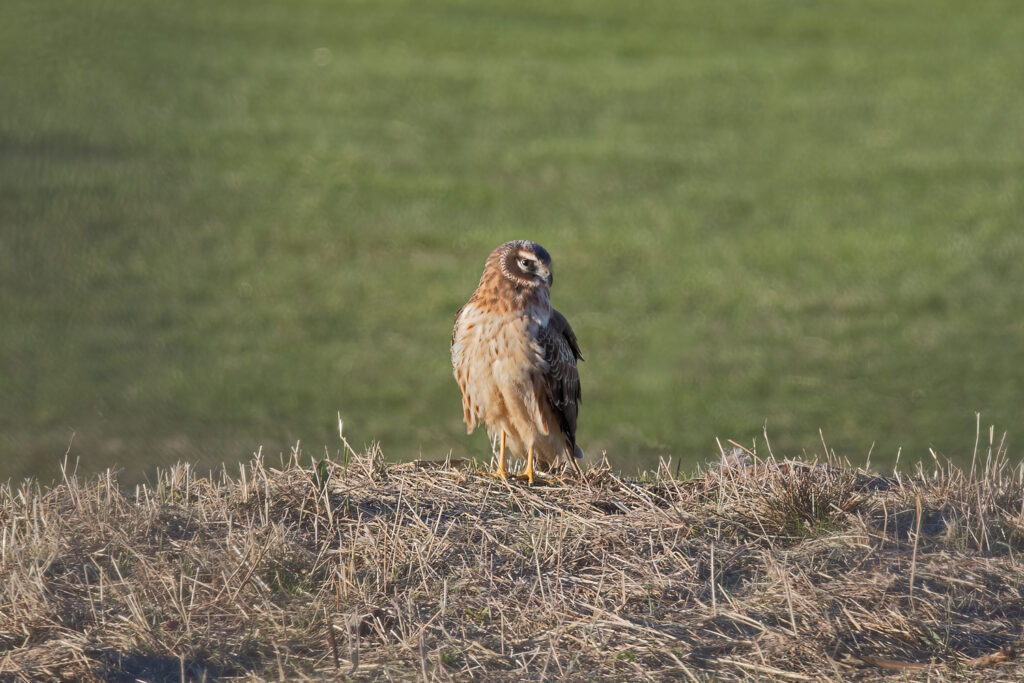
Northern Harrier Gallery
Sources
Like this post?
Thanks for reading! You can support me in making more posts like this by buying me a coffee, visiting my store, and subscribing to my newsletter. Follow me on Instagram for daily posts.

